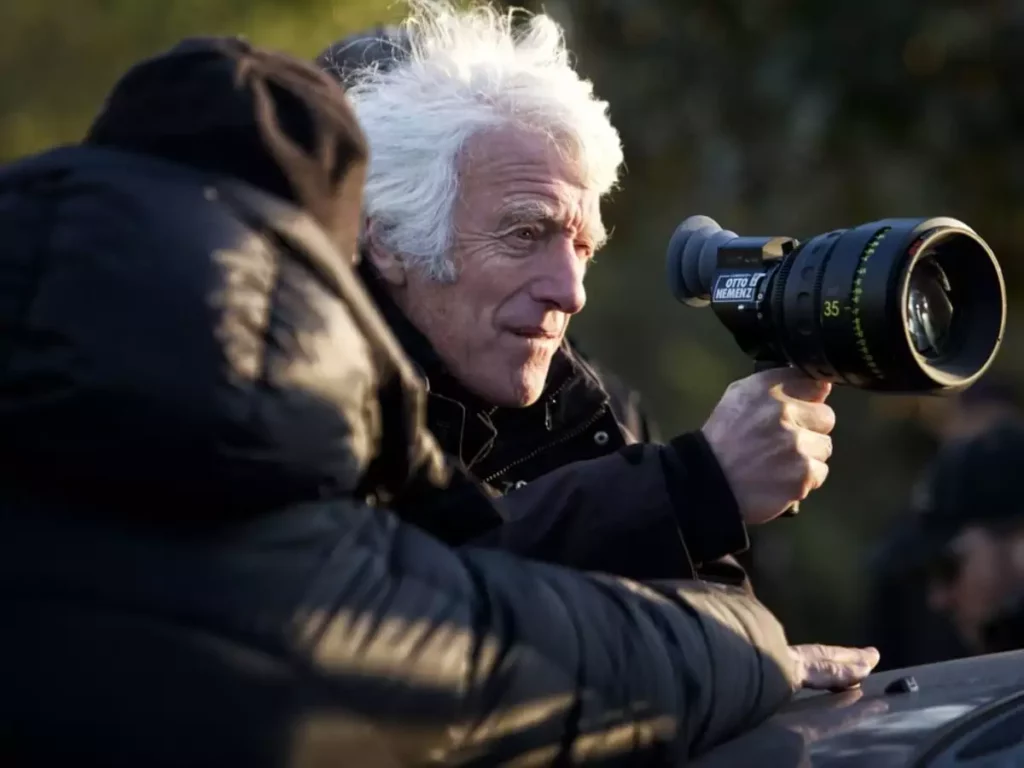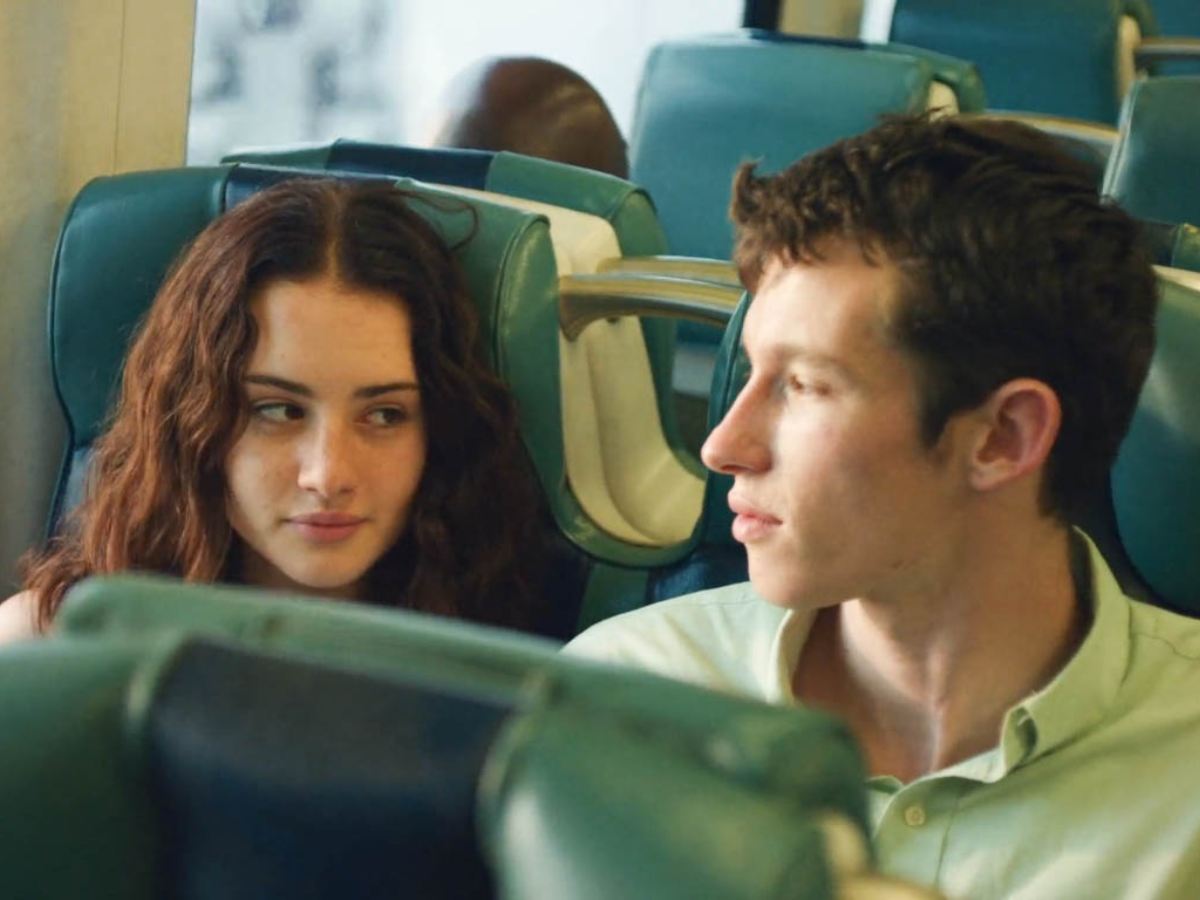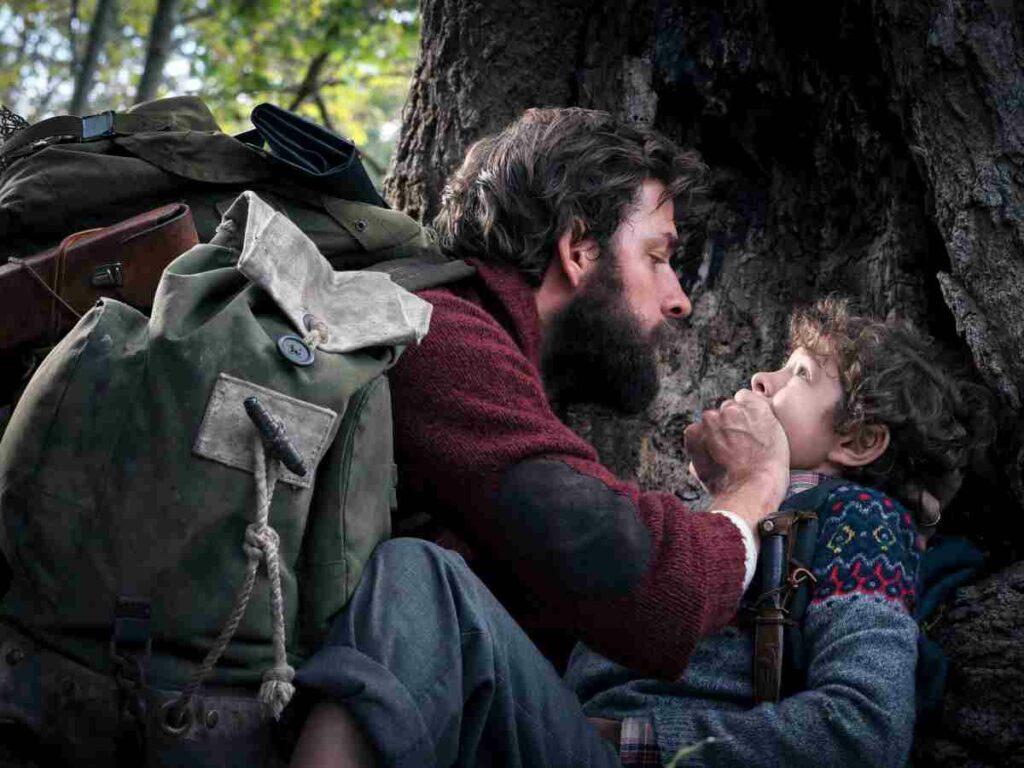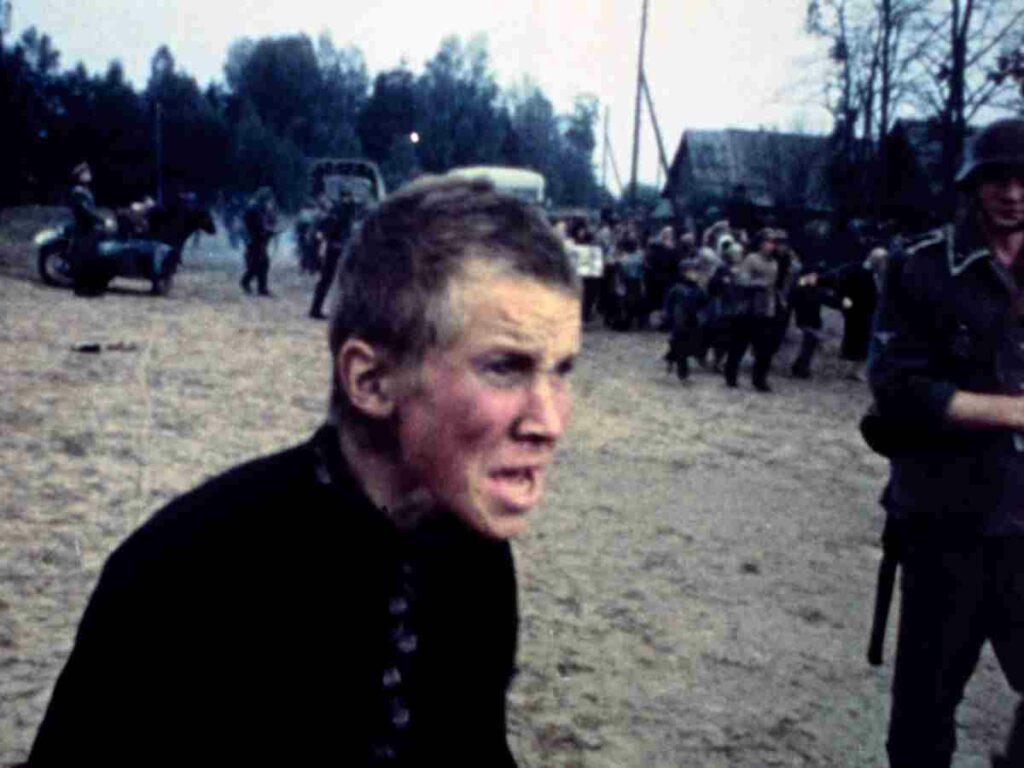Cinema lovers and filmmakers may often find themselves grappling with an existential question: who does the film belong to — the director or the writer? In attempting to answer such a momentous question, one may often overlook those who’re responsible for bringing the writer and directors’ creative collaboration to life. Yes, I’m talking about cinematographers, who create the visual tone and texture of the film. Cinematography is an art form that often goes unnoticed. It is the overlooked piece of cinema that helps to bring the story to life, yet it is often taken for granted. We might not notice it unless it’s bad, but a good cinematographer can elevate an entire film and make it look stunning. They are responsible for the composition of each shot, as well as the lighting and color palette.
The visuality of cinema is the greatest tool at its disposal, and good cinematography is capable of communicating the entire film without words, if need be. The work of a cinematographer is to ensure that the film has a coherent visual language that complements the story, and creates a recognizable style and tone for the narrative to follow. As it happens, we happen to be living in a time when the visual idiom of cinema is undergoing a renewal. From expressionistic masterpieces to works of minimal aestheticism, there’s a niche for every cinephile, and an up-and-coming cinematographer to go along with. Let’s take a look at some of the most innovative cinematographers in the industry today:
1. Roger Deakins

I’m not exaggerating when I say that Roger Deakins has been substantially influential in shaping the look of modern cinema, particularly in the adventure and sci-fi genre. Having worked on some of the most iconic films of the century such as The Shawshank Redemption, Fargo, Blade Runner 2049, and 1917, Deakins won the Academy Award for Best Cinematography for the latter two. Deakins is particularly renowned for his collaborations with the master filmmakers like Coen Brothers, Denis Villeneuve, and Sam Mendes. With firmly grounded, yet evocative visuals, his expressive use of color and perspective in films like Blade Runner 2049 are a treat for the eyes. And who could forget the breakneck pace of the frames in 1917, that compel the viewer to focus all their attention upon the screen?
He is often inclined towards simple, but well-executed camerawork that does not use too many grandiose techniques. Instead, it highlights the story. Deakins has long believed that “pretty” does not equal good cinematography, and that a cinematographer’s job is to adapt his style to the story, and decide the right direction for it. At the same time, Deakins’ precise lens choices and controlled lighting set-ups constantly push the envelope.
“I often feel that if reviewers don’t mention your work, it’s probably better than if they do.”
2. Emmanuel Lubezki

Long, uninterrupted shots, gorgeous natural lighting and a documentary style of approach — all of these are immediately reminiscent of Emmanuel Lubezki’s visual style. In his illustrious career spanning over 30 years, he has worked with groundbreaking filmmakers like Terrence Malick, Alejandro Gonzales Inarritu, and Alfonso Cuarón. It was his early work in The Tree of Life that highlighted his propensity to use natural lighting to create an ambience for the story. But it was the stunning and long continuous sequences in Cuaron’s Children of Men that first brought him international fame. Lubezki has said that going back to artificial lighting after witnessing the different textures that space, light and blocking create organically, often feels awkward and unsatisfying.
A proponent of the expressive power of the camera, his work centers around creating a narrative flow in which the audience can be guided by the visuals alone, with or without dialogue. One of his favored tricks is to use harsh sunlight as background lighting and letting it illuminate the actors’ faces and surroundings, and use blocking to give a soft, ethereal radiance instead of harshly lit silhouettes.
3. Rodrigo Prieto

Known for his long standing collaborations with Martin Scorsese, Alejandro Gonzalez Iñárritu and Ang Lee, Prieto’s cinematography style focuses on lighting, or the lack of, to create a dream-like quality. He masterfully mixes a gritty sense of realism with that of an artist’s fantasy-laden worldview. In certain instances, he uses muted light and shadows to emphasize the restraint or darkness within characters, as he does in Ang Lee’s Lust Caution. One of his most distinctive elements is the use of handheld cameras. He often shoots scenes with a handheld camera, which gives the film a more documentary-like feel.
This technique can be particularly effective in scenes that are packed with action or heightened drama, as it adds a sense of urgency and energy to the footage. In other words, Lubezki and Prieto dropped the audience at the center of the action, and brought them more closer to the on-screen characters’ emotions. Equally adept at realist cinema as he is at experimental genres, his work is a great example of adapting basic techniques to suit the story, and not the other way around.
4. Christopher Doyle

One of my personal favorites, Chistopher Doyle’s cinematography excels at saying more with less. Highly expressive and tonally distinct, his visual style gives the audience a window into the mindscapes of the characters in the films. Known for his frequent collaborations with Wong Kar Wai, his work is characterized by a rapidity of motion. He often uses handheld cameras and rapid movements to create a feeling of spontaneity and urgency. This approach gives his films a frenetic and documentary-like quality, which helps convey the characters’ emotional states and inner turmoil.
One only needs to look at his work in films like Chungking Express and Happy Together to recognize his keen eye for movement and kinetic energy in his frames. In the aforementioned films, he frames the cityscape and the crowds almost as a secondary character in the film. Doyle also doesn’t shy away from using confined space and set-pieces to add layer upon layer of meaning to the story. This scene below from In The Mood For Love is a great example.
5. Janusz Kaminski

If you’re a fan of the films of Steven Spielberg, you’ll want to check out the work of Janus Kaminski. He has lensed many of Spielberg’s films, and has helped create the director’s signature look, from Schindler’s List to the recent musical West Side Story. Kaminski emigrated to the US as a political refugee from Poland in 1981. He returned to Poland 12 years later to shoot Schindler’s List. Who could forget this powerful creative partnership that showed the unimaginable inhumanity of Holocaust to the world? And who could forget the ‘desaturated look’ in Spielberg’s gut-wrenching war drama Saving Private Ryan? In most of Spielberg’s ambitious and serious issue dramas, Kaminski employed a dark visual style that frequently used shadows to create a feeling of unease and suspense.
Kaminski is a master of light and shadow, and knows how to use color in film in a restrained manner to evoke emotion in his viewers. As a result, his color palettes are often muted and sober, perhaps better suited to sprawling landscapes and natural edifices. To that end, Kaminski is a master at creating an atmosphere that enhances the storytelling. His intent isn’t to mimic or represent reality.
6. Darius Khondji

With an extensive career that has spanned nearly thirty-five years, Darius Khondji is a screen legend in his own right. He’s worked with genre defining directors such as David Fincher, James Gray, and Woody Allen. Born in Tehran and grown up in Paris, Khondji studied cinema at the prestigious university of UCLA. He rose to fame due to his collaboration with Jean-Pierre Jeunet in the dark fantasy dramas, Delicatessen and City of Lost Children.
Of his love for art, he has said:
“I was concerned with the power of the image and much less with the story.”
No one adapts to a director’s particular style and maintains his own distinct trait like Darius Khondji. It is why he’s able to work with filmmakers like Woody Allen, Michael Haneke as well as Safdie Brothers and James Gray. The intense and energetic mood we find in Uncut Gems is a stark contrast to the soothing aesthetics of Midnight in Paris. Khondji’s work in Gray’s Lost City of Z was one of the milestones in his long career. He perfectly realizes the wonderment and dizzying terror one feels while navigating through a jungle.
7. Hoyte Van Hoytema

Hoyte Van Hoytema strives for a naturalistic tone within an exaggerated, artificial environment. It is why his collaboration with Christopher Nolan in his mind-bending works seem so grounded and yet very unconventional. He has a unique way of capturing landscapes and action that makes you feel right in the middle of it. His camera work is always subtle and unobtrusive, which allows the story to take center stage. This makes his work a perfect fit for Nolan’s high-concept story settings.
His naturalistic approach gives a feeling of deep immersion when it comes to character-driven dramas like The Fighter, Tinker Tailor Soldier Spy, and Her. At the same time, even in high-budget movies with intricately shot action scenes like in Dunkirk, Hoytema combines the epic visual scale (aerial and wide shots are used aplenty) with a naturalism that prioritizes capturing the nuances of human emotions, set amidst breathtaking backgrounds. This results in striking, individualistic images that stand out from the rest, with distinct silhouettes, bestowing an elegant, pragmatic minimalism.

8. Greig Fraser

With a penchant for subtle color palettes, smooth camerawork and natural light, Greig Fraser is quickly becoming one of the most sought-after cinematographers working today. Fraser’s visual style is often described as realistic. He prefers to capture images that feel true to life, without the use of excessive stylization or manipulation. This approach gives his work a sense of naturalism and authenticity that comes equally handy while dealing with gritty subjects in films like Zero Dark Thirty or Lion, as well as in his recent sci-fi work Dune.
One of Fraser’s trademarks is the use of natural light, which helps to create an immersive and authentic atmosphere. He also uses a lot of handheld camera work, which gives the film a sense of immediacy and realism. At the same time, he perfectly adjusts to the tone of the narrative. For instance, his subdued, slow camera movements in Foxcatcher. Another important aspect of Fraser’s style is his use of color; he often incorporates muted tones into his compositions, creating a visually striking contrast against the brighter elements on screen. This approach lends itself well to emotionally charged scenes, as it allows the audience to feel the full range of emotions being portrayed by the characters.
9. Robert Elswit

A frequent collaborator of Paul Thomas Anderson and screenwriters Dan and Tony Gilroy, Elswit brings a grounded, naturalistic approach to his films. This has proven to be a wonderful fit for his projects, as they often convey realistic stories rooted in the here and now. His films have been praised for their attention to detail. For example, he faithfully recreated 60s era lighting for his 2012 film, The Help. The idea is to completely immerse the audience in a story.
Los Angeles is a prominent character in Paul Thomas Anderson’s films Boogie Nights and Inherent Vice, and also in Dan Gilroy’s Nightcrawler. Robert Elswit grew up in Los Angeles in the 1960s and 1970s and went to USC School of Cinematic Arts. Hence Anderson’s love affair with L.A. is brilliantly brought to life by Elswit. Not just L.A., Elswit is a master at capturing the feel of a time and place. Films like Good Night and Good Luck and Syriana are fine examples of that quality.
Moreover, Elswit is a fierce supporter of shooting on film. He was of the opinion that digitally shot films have “no texture, no grain”. He made an exception for Nightcrawler which was shot both digitally and on film. Nightcrawler, being a thriller largely set in nighttime, shooting digitally perfectly captured the low-light settings.
10. Robert Richardson

An icon collaborating with other icons — that is perhaps the most apposite way to describe Robert Richardson’s filmography. One of the only three living cinematographers to have won the Academy Award for Best Cinematography thrice, he has worked with directors such as Quentin Tarantino, Oliver Stone and Martin Scorsese. In fact, he has worked with Tarantino in six features.
Richardson’s techniques are based on classical painting and photography principles, which he applies in a unique way to give his films a distinctive look. His technical prowess lies in using bold colors and illuminating overhead lights. Richardson is a strong admirer of Vittorio Storaro’s (The Conformist, Apocalypse Now) expressionistic lighting techniques. Similarly, the sharp lights from a top-down angle and backlighting in Richardson’s oeuvre brilliantly enhances the drama. It’s why Richardson always manages to create an immersive cinematic experience that engages the viewer on a visceral level, whether he’s shooting a historical epic or a small-scale character study.
Tarantino has credited him with bringing a touch of sophistication that he could only dream of in his early days:
“The goal isn’t just to make the movie that’s in my head, the movie that’s in my head is the starting point, if we fail completely, we get that, but that’s the launch pad. And then I bring great artists and craftsmen together and then they expand on it and that’s the paint box.”
11. Chung Chung-Hoon

Best known for his somber neo-noir aesthetics in the films of Korean auteur Park Chan-wook, Chung Chung-hoon is perhaps among the most technically sound up-and-coming DoP. Chung often stylistically enhances the uncomfortable reality of the narrative. For instance, his technical mastery in Oldboy and Hollywood horror IT. His techniques are finely honed and add to the overall effect of his films. Chung usually uses a shallow depth of field to keep the focus on the actors and create a more intimate feel. This technique also helps immerse the viewer by keeping the distractions in the background out of focus.
Additionally, Hoon favors natural lighting whenever possible, which lends an air of authenticity to his scenes. By shooting on location whenever possible and using unobtrusive camera techniques, he manages to create a riveting cinematic experience. Chung’s use of colors are strong yet simple. One recent example of this was his extraordinary collaboration with Edgar Wright in Last Night in Soho. Ultimately, Chung has a knack for elegantly maneuvering his camera, capturing the characters’ mindset through their movements. Chung is also a proponent for shooting on film.
12. Gökhan Tiryaki

Best known for his minimalistic, often spartan visual style and techniques, Gokhan Tiryaki’s work in Ceylan’s Once Upon a Time in Anatolia and Winter Sleep mark not only a turning point in Turkish cinema, but international cinema as well. He often intercuts between long shots and close-ups to create a sense of intimacy with the characters and emphasize their emotions with respect to the landscape. He also often employs natural lighting and captures the beauty of sprawling landscapes to add emotional heft to the narratives. The majestic beauty of the Turkish countryside, as well as its sense of sublime are well documented in his works, making them a fine repository of its austere beauty.
One of the finest contemporary cinematographers, Tiryaki has received critical acclaim for his work in both Turkey and abroad. His recent collaboration with Bengali filmmaker Aditya Vikram Sengupta in Once Upon a Calcutta deserves a special mention. Tiryaki’s astute cinematography pays cinematic homage to modern-day Kolkata.
13. Ed Lachman

Edward Lachman’s pared down visual style is immediately apparent in his early films. Lachman is known for his collaborations with Todd Haynes and Todd Solondz. Particularly, in Haynes’ Far from Heaven and Carol, Lachman did a wonderful job in recreating the highly stylized, 1950s-1960s American suburban society, which in itself was inspired by the works of the master of melodrama, Douglas Sirk. Lachman was also involved in the HBO mini-series Mildred Pierce, which once again had a period setting. These were all set inside a studio environment. Yet Lachman employed a unique lighting scheme that brought a feeling of naturalism. Lachman also makes use of Dutch angles and wide lenses to create an oppressive feeling, heightening the tension in the film.
He also surprised us when he collaborated with the provocative filmmaker Ulrich Seidl to make the ultra-realistic and largely static Paradise trilogy and Import/Export. Otherwise, Lachman’s works often have a dreamlike quality, with blurred images and soft focus. This gives the scenes an ethereal feel, and helps to convey the characters’ emotional states. Lachman also uses color very effectively, creating moods and emotions with his choices of palette. For example, he often uses cool colors to create a feeling of detachment or unease. His creation of a melancholy, moody atmosphere is of great benefit in films like The Virgin Suicides and Erin Brokovich as seen below.

14. Ellen Kuras

“I am interested in creating an emotional experience for the audience.”
The mind behind the glacially cool-toned, subdued frames of films like Eternal Sunshine of The Spotless Mind and Coffee and Cigarettes, Ellen Kuras is known for her minimalist yet deeply emotive cinematography. Her work on films such as I Shot Andy Warhol and Summer of Sam established her as one of the top talents in the industry. In more recent years, she has worked on the true-crime mini-series Wormwood with the great documentarian Errol Morris. Morris’ usual polished recreations of real events and other formalist techniques are gorgeously enhanced by Kuras.
Kuras is known for her strong attention to detail. While she was studying anthropology, Kuras made short documentary projects. One short documentary shot in Cambodia was screened at Sundance, and later received an Academy Award for student film competition. It led to her becoming a cinematographer. She often uses handheld cameras and natural light to create a documentary-style look. For instance, the handheld long takes in Eternal Sunshine added a profound emotional layer to the narrative. Kuras often goes against the traditional conventions of cinematography. She mixed natural lights with set lights. She has worked on 35 mm film cameras as well as effectively used digital gear.
15. Bradford Young

One of the most promising cinematographers working today, Bradford Young exhibits a striking sense of color and space. Young is a two-time winner of Cinematography Award at Sundance Festival. The American indie scene was Young’s entry point. When Dee Rees made a short in 2007 titled Pariah, thanks to a Sundance Grant, Young worked as the cinematographer. Later, when she made it into a feature-length film, Young collaborated with her and his dreamy, evocative cinematography announced to the world the arrival of a great talent.
Young’s next landmark work was David Lowery’s average yet brilliantly visualized Ain’t Them Bodies Saints (2013). His use of nostalgic natural light in the film reminded us of Terrence Malick’s early masterpiece Days of Heaven (1978) Selma, A Most Violent Year. Villeneuve’s Arrival brought him to the attention of the Hollywood mainstream. One of Bradford’s signature techniques is called ‘the minus green’. This involves desaturating all colors except for green, which creates an incredibly striking effect. In Selma, he used this technique to great effect in scenes featuring Martin Luther King Jr., resulting in an incredibly powerful visual representation of the character.
Young’s most recent notable work was in the heart-breaking mini-series When They See Us. Her treatment of New York City in the series was likened to that of the works of African-American photographer and director Gordon Parks.
Conclusion
“Seeing comes before words.”
The renowned art critic John Berger once famously remarked that every image is a way of seeing. If there is any truth to that, the work of a cinematographer becomes all the more profound. It falls to them to frame the story of the film in such a manner that the audience understands the experiences and sentiments being communicated. Good cinematography can make a bad movie tolerable and a good movie great, or so critics write. Whatever the case be, the skills a good cinematographer brings to the table are virtually indispensable. By appreciating these fine artists, we hope we’ve introduced you to filmmakers that aspiring artists, cinema lovers and film scholars can learn from.
Which cinematographers did we miss? Whose style, in particular, resonates with you? Let us know in the comments below.
(Additional writing by Arun Kumar)




